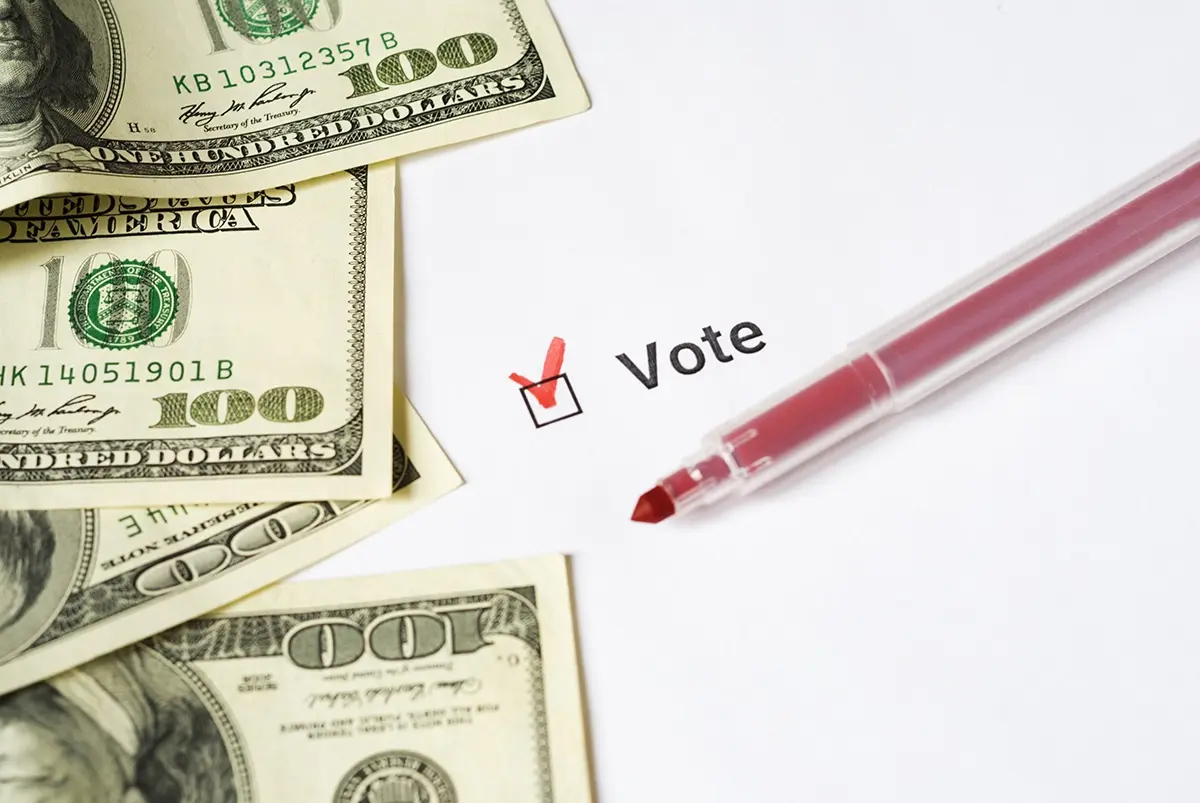3 min read
Political Action Committee (PACs) Scams: The Truth About Political Donations
Rachel Devine
:
January 03, 2025

Rachel Devine is an Analyst II at AML RightSource. We encourage our team members to
share their insights and expertise by contributing to our content library.
Scam Political Action Committees (PACs)
In an era where political influence is often swayed by financial powers, scam Political Action Committees (PACs) have emerged as a potential source of fraud. Scam PACs exploit the trust of well-meaning donors and undermine the integrity of the democratic processes. Anyone of voting age can fall victim to these scams, whether by text, email, phone call, or postal services. The Federal Bureau of Investigation (FBI) explains that a scam PAC is a “...fraudulent political action committee designed to reroute political contributions for personal financial gain. This is a federal crime.” Scam PACs not only obtain funds for fraudulent personal use but also sell personal information from donors, which can be used to perpetrate future crimes.
Identifying a Scam PAC
Scam PACs often appear as legitimate organizations supporting a political candidate. However, not all the groups stay true to their word. Illegitimate PACs often misappropriate funds received from well-intentioned and unsuspecting donors. Identifying a scam PAC from a legitimate PAC is essential to aid in security for those who donate. The FBI lists four ways to identify a potential scam PAC.
- Search the Federal Election Commission (FEC) website to confirm that the PAC has been properly registered with the U.S. Government. Any PAC not appearing on the FEC website should be considered fraudulent, and no funds should be donated as the legitimacy of the PAC is in question. If the PAC nor the associated political candidate(s) can be located via a search of the FEC database, then the PAC is likely not registered and, thus, illegitimate. If the PAC has been identified on the FEC website, then the next step is to check where the PAC is spending its money.
- The PAC should file quarterly reports, as the FEC requires this. The PAC’s disbursements can be searched on the FEC website, and this information can aid in determining if a PAC is a scam. In some cases, 90% or more of committee disbursements are paid to vendors in which the committees’ officers have a financial interest. In comparison, 10% or less of their disbursements are spent on candidate-support activities.
- A fraudulent entity may present itself under a name like a legitimate PAC, hoping donors won't notice the slight difference and believe that the PAC is legitimate. It is essential to check the exact name and the date the PAC was established to confirm that all data points match a registered PAC.
- Donation information is publicly available, and the donor's name should never be changed or altered. PAC contributions can be searched on the FEC website.
These common red flags associated with illegitimate PACs can aid in identifying what PACs are legitimate versus potentially fraudulent.
What to Look for in CDD/EDD Reviews
When completing a CDD or EDD on a PAC, identifying the organization's legitimacy and those who operate it is a top priority. Some documents that can aid in determining the legitimacy of a PAC are a FEC Registration-Statement of Organization (Federal), a Statement of Organization from a State Elections Commission (State only), an SS-4 (Signed), or an 8871 (Political Organization Notice of Section 527 Status), and any bylaws associated with the PAC. Failure to provide any of those documents is a red flag that the organization may not be legitimate. When completing an EDD on a PAC, a thorough review of transactions will identify any potential red flags. Be sure to check the relations to the counterparties to ensure they are related to the PACs' cause. Do adequate internet research, ensuring the funds are being spent in alignment with the FEC statement published by the PAC and if the transactions match what is listed in the quarterly reports. Also, check that the counterparties are not related to the operators of the PAC by observing the transactional patterns and the locations where the transactions are occurring. The funds should be appropriately allocated to the designated political organization that the PAC supports.
What Does a Scam PAC Look Like?
In 2016, while Harold Russel Taub was running for U.S. Congress, he created two PACs for soliciting donations. Taub used a list of pre-existing donors and images of not him but a former secretary of the United States Navy. Taub solicited over $1.6 million from well-meaning donors. The Department of Justice discovered Taub never registered the PACs with the FEC, and the people whose pictures he used were not associated with the PAC. The last element noted was that Taub told donors that 100% of the contributions were going to his cause when, in fact, Taub was spending that money on personal expenditures, including excessive travel, wine, cigars, and trips to Las Vegas for gambling. Taub pled guilty to wire fraud and violating the FEC Act, a United States federal law controlling political campaign fundraising and spending. He was sentenced to 36 months in federal prison and ordered to pay more than $1.1 million in restitution.
Conclusion
Identifying the red flags associated with scam PACs can help shut down fraudulent PACs and minimize the number of victims. The Stop Scam PACs Act (2022) amended the Federal Election Campaign Act of 1971 to prohibit the misrepresentation of actions on behalf of candidates, political parties, and political committees and organizations, and for other purposes. If someone has been targeted or falls victim to a scam PAC, instruct them to contact their local FBI field office and ask to speak to an election crimes coordinator.

